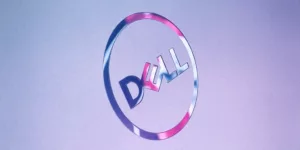This month Dell launched two new rugged laptops, the Latitude 5430 Rugged Laptop and the Latitude 2330 Rugged Extreme Laptop. Currently, there are only two large companies in this rugged space, Panasonic and Dell. For years, Panasonic was the market maker for this class of product. Still, a few years ago, it cut most marketing, and the interest in this class dropped off even though the three areas where the products are sold in volume—police, petrochemical, and military—still purchase this class of product in volume.
Panasonic has one huge disadvantage: It mostly exited the PC space outside of Asia. It was never much of an IT supply company; even with regular PCs, it mainly focused on the consumer space. As a result, it lacked the economies of scale, management tools, and consistent global presence of the major PC vendors like Dell. Dell stepped into this space, promising similar performance levels and certifications to Panasonic but with lower prices, better and more consistent support, and the economies of scale of a global business and consumer-focused PC vendor. Dell has not yet become the market maker for this class of product. Still, with Panasonic giving that position up, Dell has an opportunity to dominate but has so far failed to fund an effort sufficient to make that happen.
Let’s talk about these two new laptops and whether this market will collapse if no one fulfills the market maker’s role.
Market makers
A market maker is a company, or companies, that do most marketing to drive buyers who otherwise wouldn’t know about the product class to that class. Historically, the market makers for PCs, in general, are Apple, Intel, and Microsoft, which assure there is, either directly or through MDF (market development funds), that someone is driving interest in the class. A market maker becomes critical at two points in a product class’s life cycle. First, to establish the class, and second to defend it if alternatives show up.
Alternatives to rugged notebooks are products like the Lenovo ThinkPad that promotes similar capabilities but in a more mainstream product, thin clients that are naturally more rugged due to their more solid-state nature, and an increasing wave of a connected smartphone or wearable devices that may be better suited to specific tasks than clamshell notebooks. This list isn’t exhaustive, as I’ll cover in a moment.
Currently, the market is experimenting with head-mounted displays, advanced military-grade smartwatch-like products, and rugged tablet variants, which could, but so far, haven’t displaced this class of offering. HP has played around with rugged smartwatches in the past, Lenovo is currently looking at head-mounted displays, and there have been rugged cases for iPad-like products in the market for some time. Without a market maker, this segment remains vulnerable to displacement.
Dell vs. Panasonic
Panasonic has a more extensive line and far more experience with this class of product. Still, Dell is vastly more visible overall and more likely to be the preferred vendor for all other computer products in the verticals looking at rugged computers. Panasonic lacks the product breadth to move against Dell in a big way. Most of Panasonic’s other markets (industrial displays, POS, automotive, in-plane entertainment, etc.) have little or no relation to the PC market except in Japan, where the company has a broader product set.
This lack of product breadth means that Dell can incrementally grow into rugged from a base of PCs, servers, and storage products while Panasonic has no similar synergies. Dell can blanket the organizations with consistent support, provide that one throat to choke that IT likes in a vendor, and provide far more consistent support globally than Panasonic, which generally has to work through resellers to gain broad geographic coverage. What keeps Panasonic alive is that Dell isn’t funding a significant displacement effort. It’s growing into the market organically, but if Dell decided to displace Panasonic entirely, it has the resources and capability to do so. And it wouldn’t be hard to argue that Panasonic is in the process of exiting the segment, given it has cut back support for it sharply.
But the more significant threat for both companies is that alternatives are appearing, which could render the class redundant. Law enforcement is looking at robotics, the military is looking at integrated technologies like exosuits, and IoT may shift the Petro-Chemical market away from PCs in the field entirely as they move to cut costs and automate (not to mention the global effort to move away from fossil fuels which could eliminate the entire segment). And, of course, we have Microsoft, one of the PC market makers, surfacing their Hololens as a potential PC replacement.
Dell’s new Latitudes
Dell’s rugged products are being used in emerging markets like vertical farming (AeroFarms), existing markets like law enforcement (Shenandoah County Sheriff’s office), the military, Ford, and even SpaceX (arguably the most exciting aerospace company at the moment). Even the Penske racing team uses them.
Dell’s line has become far more complete over time with two highly rugged tablets, one extremely rugged Laptop, and two semi-rugged laptops (lighter and less expensive but still able to be used outside in the weather).
The new Dell Latitude 5430, which is due in early December, is a capable laptop ideal for fieldwork and law enforcement where extreme capability isn’t needed. Still, a lower cost and lighter weight make it more attractive than a fully rugged product. It weighs 4.35 pounds with an 11th generation Intel processor, discrete graphics (NVIDIA T500), and Dell’s proprietary AI-driven optimizer.
The new Latitude 7330 Extreme Laptop is a fully rugged laptop, still priced under its competition, and it is more designed for military use. Though it is only around a pound heavier, it is built like a tank and should work better in extreme situations that military units and first responders experience. It also has 11th generation Intel power but lacks the NVIDIA graphics.
Both products support 5G and WiFi 6E and have integrated TMP 2.0 security (required for Windows 11, the most secure Microsoft OS) and carry the EPEAT-Silver certification for sustainability. This set of advanced components should allow them to function without becoming obsolete early like many products in this class often due to using legacy hardware.
Wrapping up:
While Dell represents a strong and less risky alternative to Panasonic, the risk to this class of product is displacement by one of several emerging technologies over the next ten years. Without a market maker, this class remains at high risk of becoming redundant. If a new market maker for these new technologies emerges, like Microsoft, things could get dicey. Between Dell and Panasonic, Dell remains the safer choice for now because of its much higher commitment to PCs and IT technology in general but, if the rugged segment pivots, either individually or collectively, which seems likely, then these segments will again be up for grabs.








